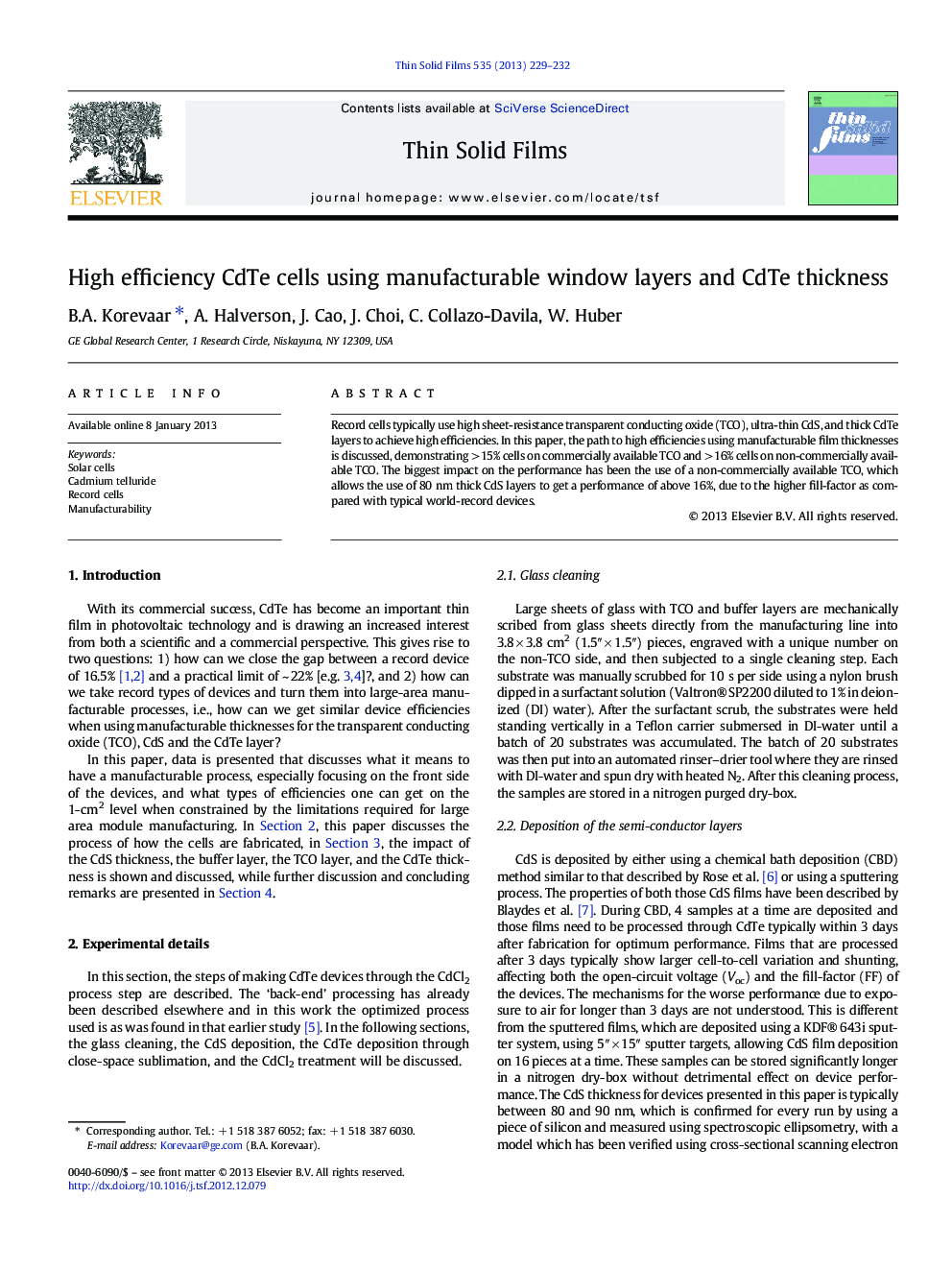| Article ID | Journal | Published Year | Pages | File Type |
|---|---|---|---|---|
| 1666192 | Thin Solid Films | 2013 | 4 Pages |
Record cells typically use high sheet-resistance transparent conducting oxide (TCO), ultra-thin CdS, and thick CdTe layers to achieve high efficiencies. In this paper, the path to high efficiencies using manufacturable film thicknesses is discussed, demonstrating > 15% cells on commercially available TCO and > 16% cells on non-commercially available TCO. The biggest impact on the performance has been the use of a non-commercially available TCO, which allows the use of 80 nm thick CdS layers to get a performance of above 16%, due to the higher fill-factor as compared with typical world-record devices.
► We correlate record cell efforts to large area manufacturing. ► We suggest a possible role for the buffer layer in thin film devices. ► We demonstrate the effect of CdS thickness on the performance of CdTe devices. ► We demonstrate the impact of transparent conducting oxide on device performance. ► We demonstrate > 16% cells using a manufacturable device stack.
